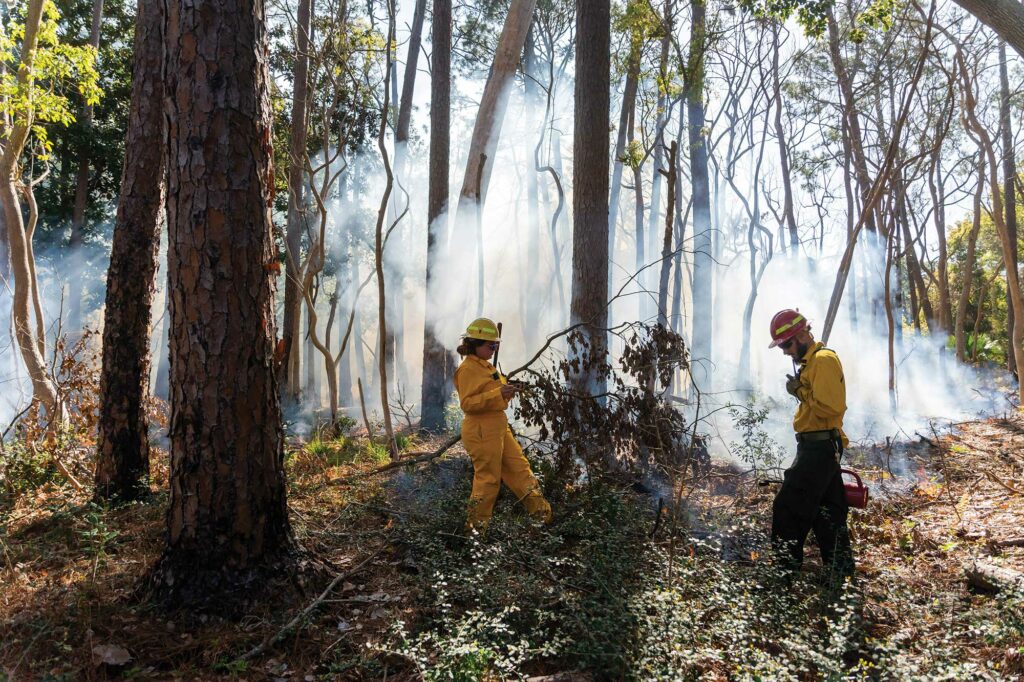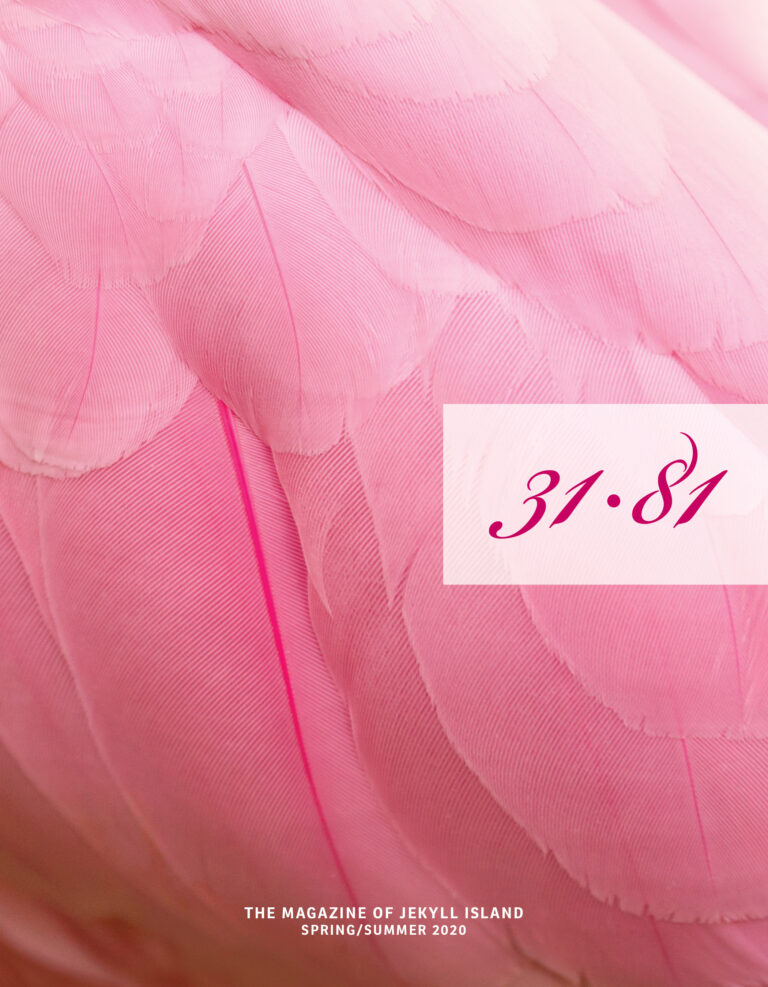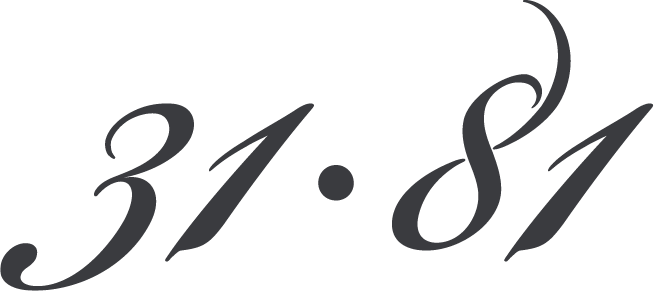Island caretakers aim to decrease risk of wildfires and improve ecology by blazing a path of their own
By Rebecca Burns
Photography by Brian Austin Lee
On May 2, 2017, lightning struck Jekyll Island, igniting tall pines near the marina and causeway. The blaze ultimately consumed 10 acres. Though bad luck triggered the flames, as a bit of good luck would have it, the Georgia State Patrol was conducting training nearby and used a helicopter to help with water drops. In a few days, the fire was extinguished. But three years
later the effects are still visible in the scarred and dead trees near the entrance to the island.
To prevent future fires and to conserve the island’s natural resources, the Jekyll Island Authority embarked on a plan: set small fires to prevent larger ones. For the layperson, fighting fire with fire seems paradoxical. But it’s an
historically proven process to reduce the risk of blazes getting out of control and to keep natural habitats healthy.
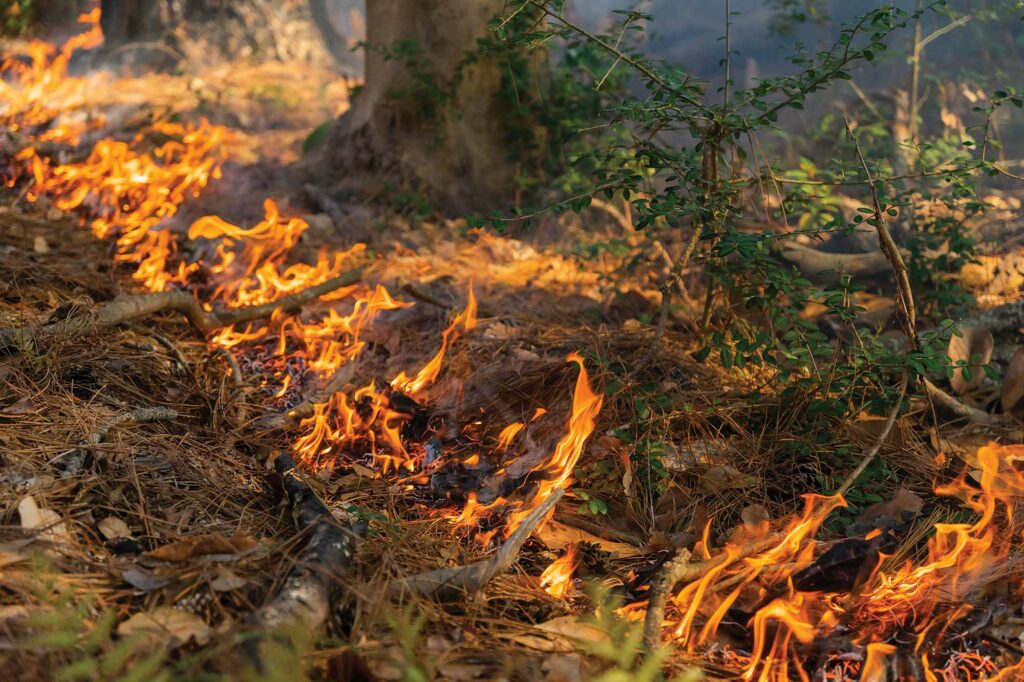
Just the Prescription
“Prescribed fires are like going to the doctor,” says Ken Parker, a wildland fire specialist with the Georgia Forestry Commission. “To get well, you might be prescribed a course of medicine. A burn plan is like a prescription for the forest.”
Fire is essential to the health of forests, particularly those in the Southeast. The ancient method of fire-starting—by lightning strike—maintains the balance of forest growth. Naturally occurring fires spread over millions
of acres each year, reducing undergrowth and clearing space for grasslands. In the modern world, though, fires are extinguished quickly by firefighters and contained by human development, with roads and other construction acting as firebreaks. It disturbs the forest’s natural cycle.
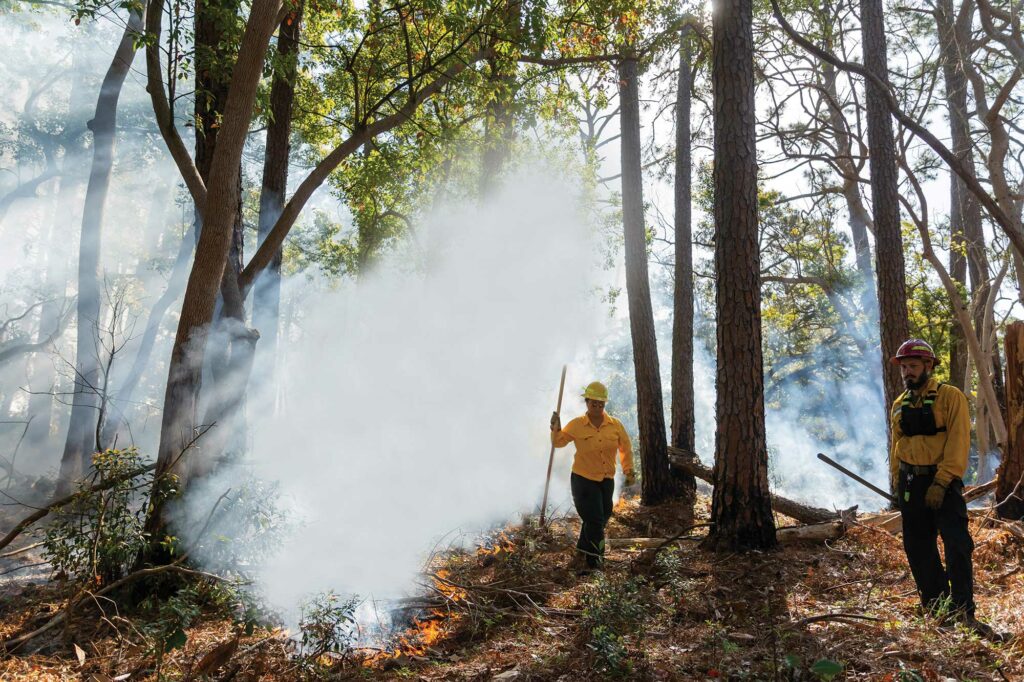
“Prescribed fire is just man mimicking what Nature does naturally,” says Parker, who has more than a quarter-century of experience with the practice, including 22 years in timberland management and five years running the wildland fire certification program for the state forestry commission.
The three major goals of prescribed fires are to:
- Improve public safety by reducing fuel that can build up in a forest
- Enhance natural habitats for native plants and wildlife, and
- Manage timberland.
Most prescribed burns address a combination of these factors. On Jekyll, the key objectives are public safety and ecological conservation.
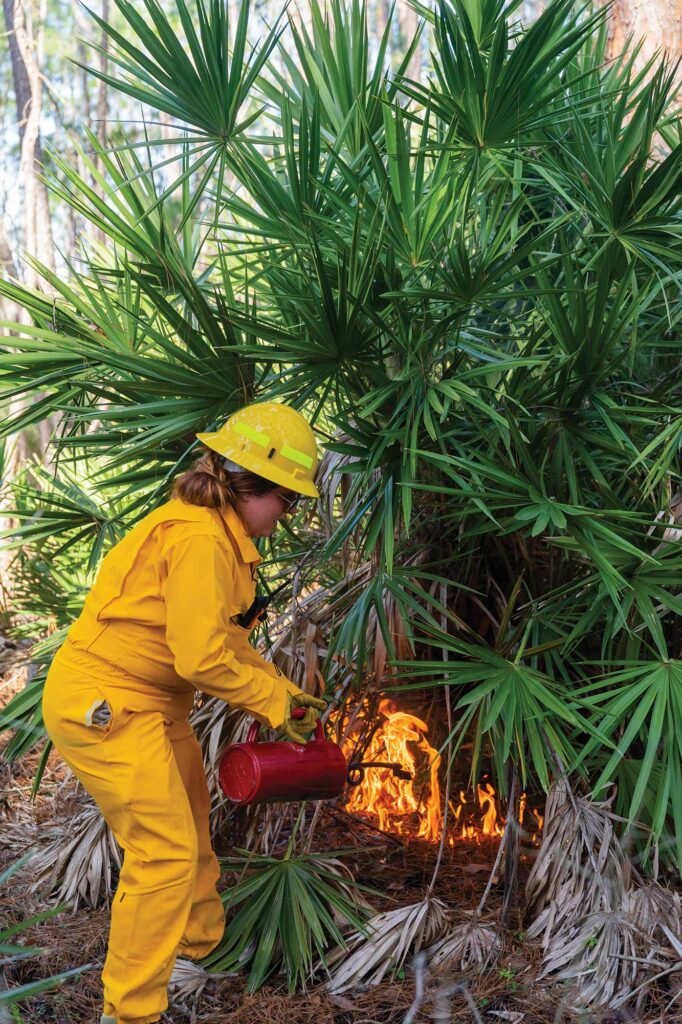
The Circle of Wildlife
“Fire is needed in Southeastern forests like rain is needed for the rainforest,” says Joseph Colbert, wildlife biologist with the Jekyll Island Authority.
When fire consumes the tangles of undergrowth in a forest, new plants can grow, providing nourishment for animals and pollinators. Fire creates clearings with more sunlight and grassland for grazing animals. Fire can clear trees around wetlands, offering access to water for creatures such as salamanders. Without the natural pattern of fire moving through forested areas, habitats suffer.
Prescribed fire on Jekyll enhances conditions for a range of species. One of the goals is restoring grassy areas, which include meadows of distinctive rose-tinted muhly grass, or sweetgrass. “[It’s] the habitat for so many species,” says Colbert, who wrote his master’s thesis on prescribed fire in maritime grasslands. “It is essential and has ecological benefits.”
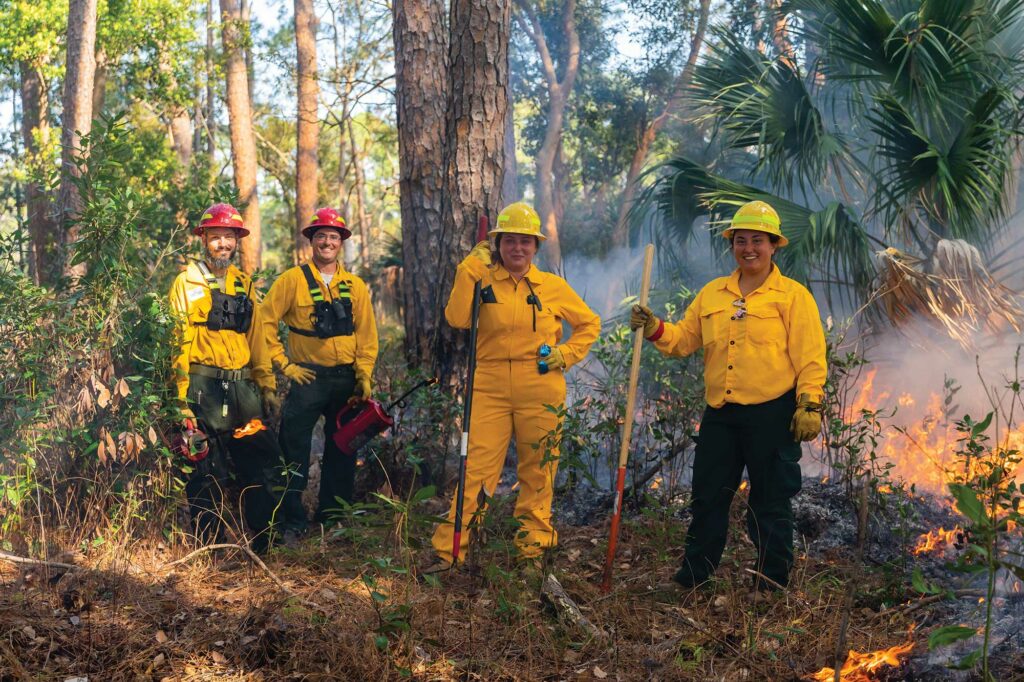
Fewer Fuels for Fire
Regular fires reduce dropped pine needles, fallen leaves, and overgrown brush on the forest floor. This buildup, also called “duff,” can serve as an accelerant for a fire. Prescriptive burning reduces duff and thus lessens the
chance of a fire burning uncontrollably.
“Most prescribed fires are on one-, three- or five-year rotations, but in areas of Jekyll, fire has been suppressed for 50 or 60 years,” says Yank Moore, JIA’s conservation land manager. “The fuel loads have built up.” In most wooded
areas, duff is a few inches deep. But in the northern end of Jekyll, it has reached levels several feet high, Moore says.
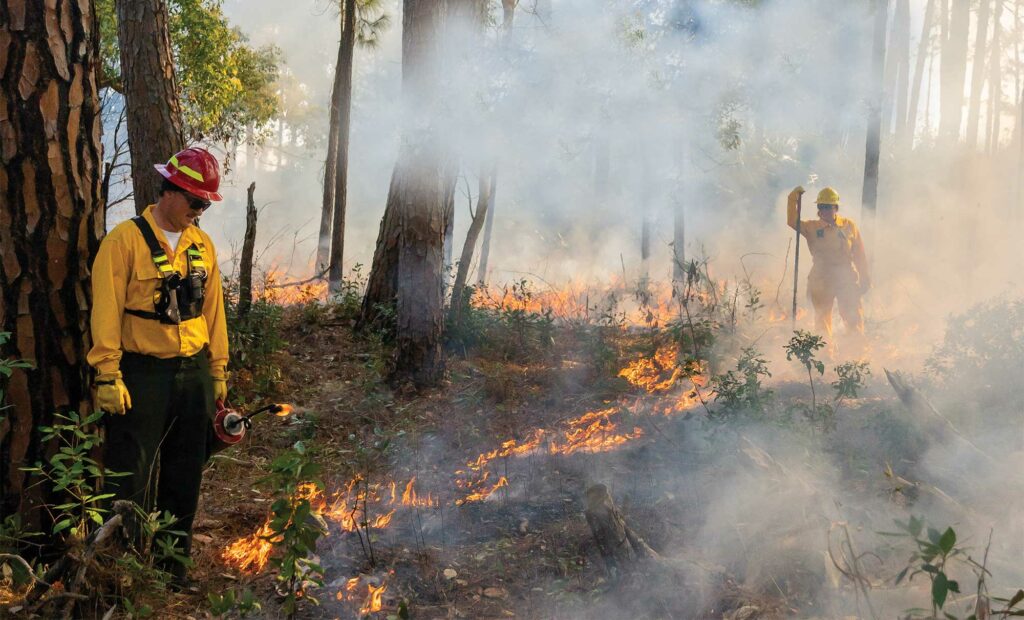
Duff not only provides fuel for potential wildfires, it suppresses plants essential for wildlife. Just as a layer of pine straw prevents weed growth in a suburban yard, accumulation of pine needles in a forested area prevents
growth of the grass and plants animals need.
Reducing that build-up will take a long and carefully outlined plan of prescriptive burns, Moore explains. Duff will be burned off a few inches at a time, and only under ideal weather conditions. It could take years to
reduce fuel loads to a healthy level. But the payoff will be significant.
“We are not burning to burn,” Moore says. “The goals are to improve diversity of both the wildlife and plant communities on the island.”
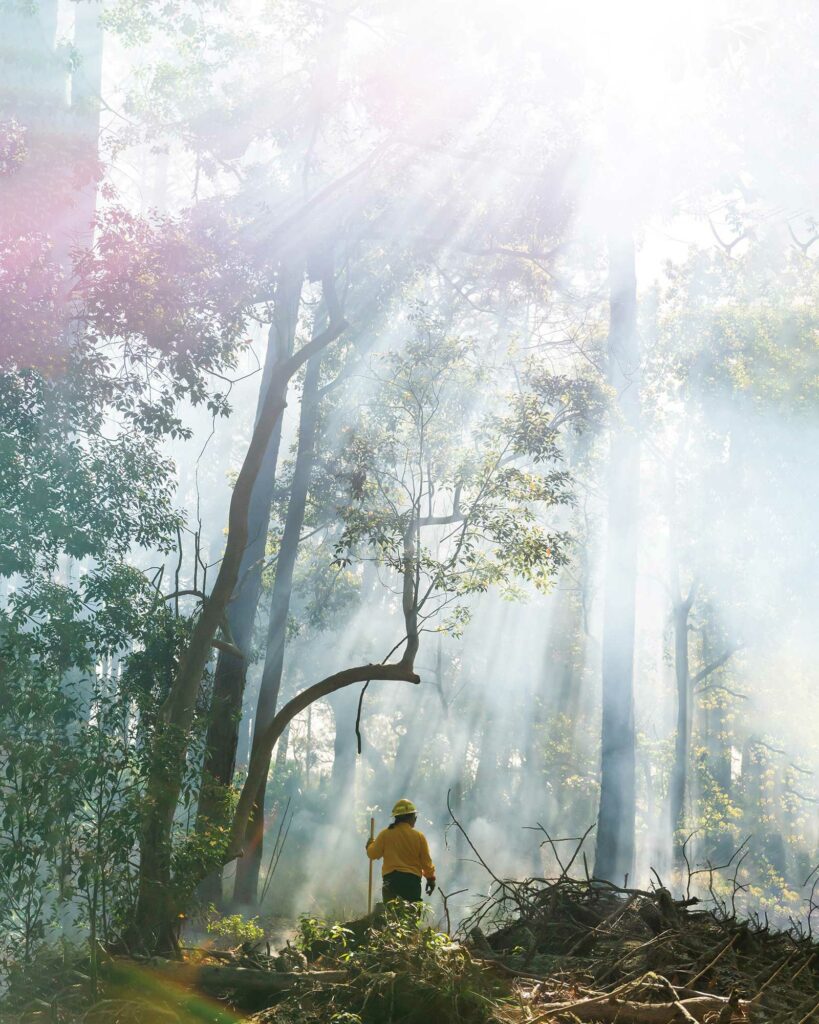
Where There’s Fire, There’s Smoke
“Before a match is dropped, a lot of planning goes into prescribed fires,” says Parker, the wildland fire expert.
Weather, wind, and how wet (or dry) the area is all are considered. Burners also consider the specific plants or trees in an area. In coastal regions such as Jekyll, waxy plants such as saw palmettos create a unique challenge because, while they can be slower to ignite, they can burn with great intensity.
When planning a fire, as much attention is paid to smoke as flames. Some of the factors affecting smoke include the moistness of the fuel, wind conditions, the height the fire might rise, and the potential for fog. Particulate matter in smoke bonds to the water in fog and increases visibility problems. All of these factors are included in the dispersion index, which indicates how well and how quickly smoke might clear. “There is a lot of science that goes into planning a burn,” Parker comments.
For Moore, Colbert and the rest of the Jekyll team charged with implementing the island’s fire prescription, a key ingredient is patience; waiting for ideal weather conditions. Fire can’t be started too soon after rainfall. And it can’t be started in too-dry conditions, for risk of rapid spreading. It can’t be started when the air is still and smoke will accumulate. And it can’t be set when wind gusts could spread flames.
Colbert stresses that visitors to the island who might be there on the day of a planned fire should understand what’s happening. “One day of prescribed fire on a day with ideal conditions for a burn with a little bit of smoke is way better than three or four weeks of smoke and burning when lightning strikes,” he says.
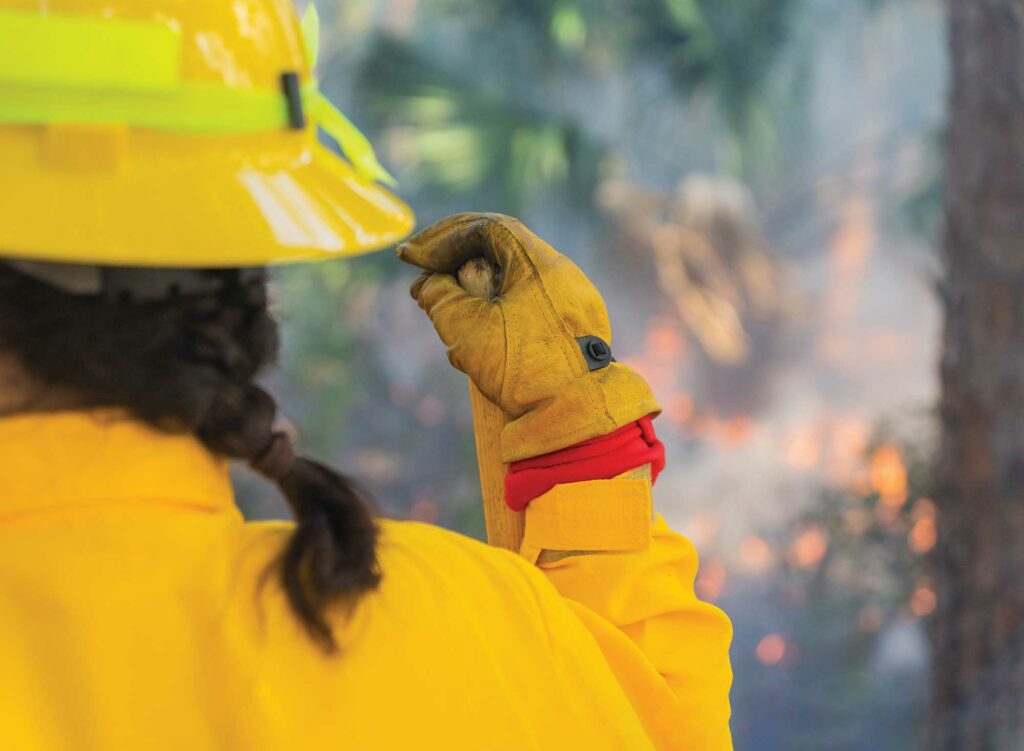
Georgia’s Burn Masters
“Saying you can’t see the forest for the trees is a good adage,” says Ken
Parker, wildland fire specialist for the Georgia Forestry Commission. “If
the forest is too overgrown, the trees can’t flourish. If there are too many
trees, the forest is not healthy.”
In Georgia, a leader in using the technique to manage forests, an average of 1.3 million acres of land are consumed by prescribed fires each year, Parker says. In 2020, because of heavy rainfall, the total is likely to be under 1 million acres.
To become certified as a Georgia prescribed fire specialist, a person needs:
- Two years of experience in prescribed fires
- Five fires under your belt as a “burn boss”
- Completion of a two-day course
- A passing grade on an exam
